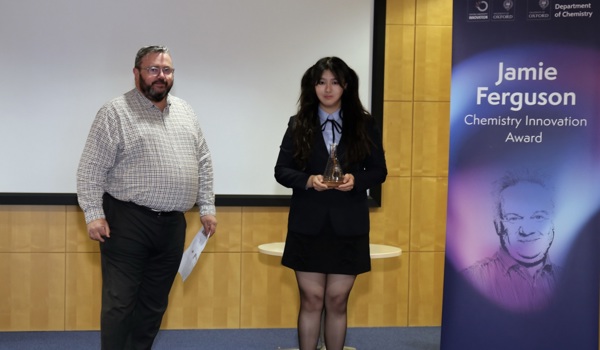17 Apr 2023
£29 million investment to support critical battery research
By addressing fundamental research challenges and critical industry needs, this work is helping to unlock key battery technologies to deliver future prosperity

The Faraday Battery Challenge, delivered by Innovate UK for UK Research and Innovation, is taking on the UK Government’s ambition to make the UK a science and innovation superpower for batteries, with a high-tech, high-value, high-skill battery industry. To deliver this vision, they have partnered with the Faraday Institution, the UK’s leading institute for electrochemical energy storage research, to deliver a £29 million investment to six key battery research projects aimed at delivering commercial impact.
Two of the six selected projects involve researchers from the Department of Engineering Science. The investment will fund research in these areas over the next two years to 31 March 2025.
Professor Pam Thomas, CEO, Faraday Institution, commented, "The Faraday Institution is committed to identifying and investing in the most promising and impactful battery research initiatives. This project refocusing is an important part of that process, and allows us to direct even more effort towards those areas of research that offer the maximum potential of delivering societal, environmental, and commercial impact."
Improved batteries for electric vehicles
Professor Mauro Pasta, from the University of Oxford’s Department of Materials, will be taking the position of Principal Investigator for the Solid-state Batteries (SOLBAT) project.
The ambition of SOLBAT is to demonstrate the feasibility of a solid-state battery that has superior performance to lithium-ion in electric vehicle (EV) applications. This could increase the range of EV batteries by safely implementing metallic lithium anodes, reduce recharging time, and address safety concerns by removing the need for flammable liquid electrolytes.
SOLBAT was established to address fundamental research challenges facing the realisation of solid-state batteries, and to develop solutions that can scale to commercially competitive products. The new funding will enable the project to focus on failure mechanisms and develop solutions for anode, cathode, and electrolyte technology.
Professor Pasta said: "We are grateful to the Faraday Institution for the continued support of the SOLBAT project. This new investment will allow us to maintain momentum in our progress towards understanding and addressing the scientific roadblocks that are hindering the commercialisation of solid-state batteries."
The project consists of three Work Packages, led by Professor Sir Peter Bruce and Professor Patrick Grant (Department of Materials) and Professor Charlotte Williams (Department of Chemistry). Also involved as Co-investigators are Professor David Armstrong, Professor Chris Grovenor, Professor Peter Nellist and Dr Gregory Rees (Department of Materials), Professor Charles Monroe (Department of Engineering Science) and Dr Georgina Gregory (Department of Chemistry). SOLBAT also involves researchers from Newcastle University and Diamond Light Source.
Multi-scale Modelling project
Engineering Science researchers are also involved in the Multi-scale Modelling project, led by Imperial College London, which is focused on improving simulations of battery performance and lifetime across many scales, from atomistic to device level.
The project involves Professor Charles Monroe, Professor David Howey, and Dr Nicola Courtier from the Department of Engineering Science; Professor Jon Chapman and Professor Colin Please from the Mathematical Institute; and Dr Martin Robinson from the Department of Computer Science.
Accurate simulations of batteries could enable makers to improve battery designs and performance without having to create expensive prototypes to test every new material or design. The tools that currently exist, however, typically lack the accuracy required for understanding the phenomena occurring within batteries. The Multi-scale Modelling project is addressing this by developing new digital and experimental techniques for understanding battery behaviour at a range of different physical scales (from the nanoscale to whole-pack level) and time frames (from nanosecond atomic processes through to long-term degradation). Ultimately, this will enable fast, accurate models that incorporate the most complete physics and advanced mathematical techniques, developed to be directly usable for industry.
Further information about these and the other successful projects can be found on the Faraday Institution’s website.
Article adapted by kind permission of the University of Oxford News Office




